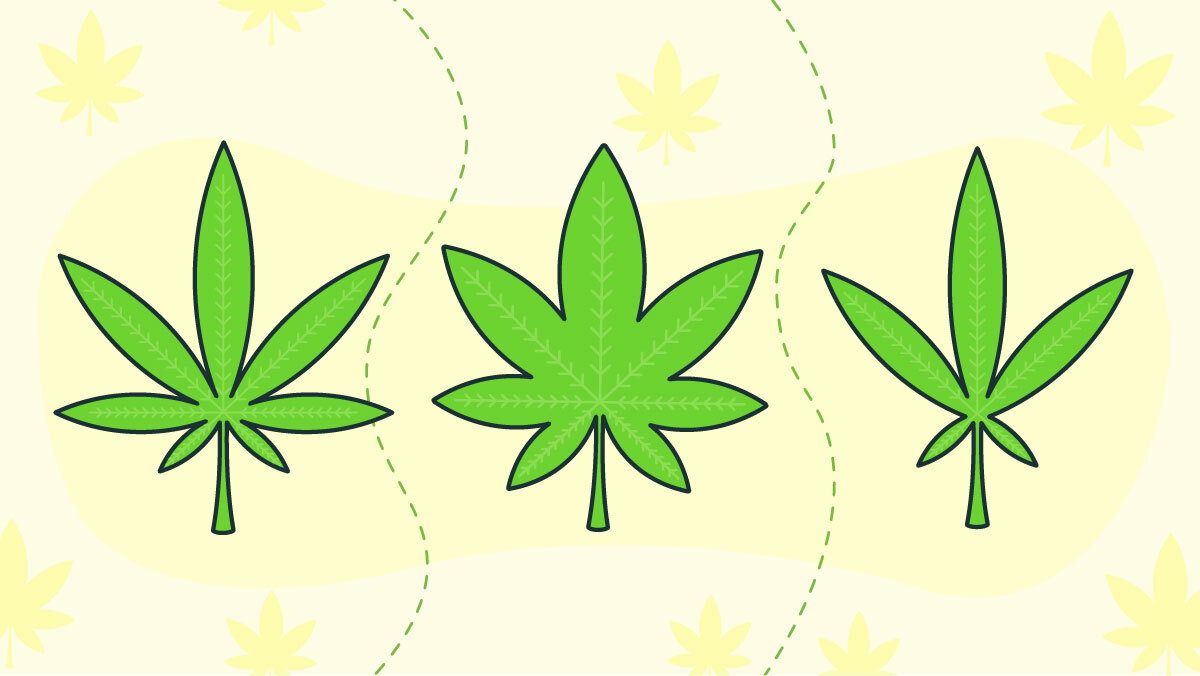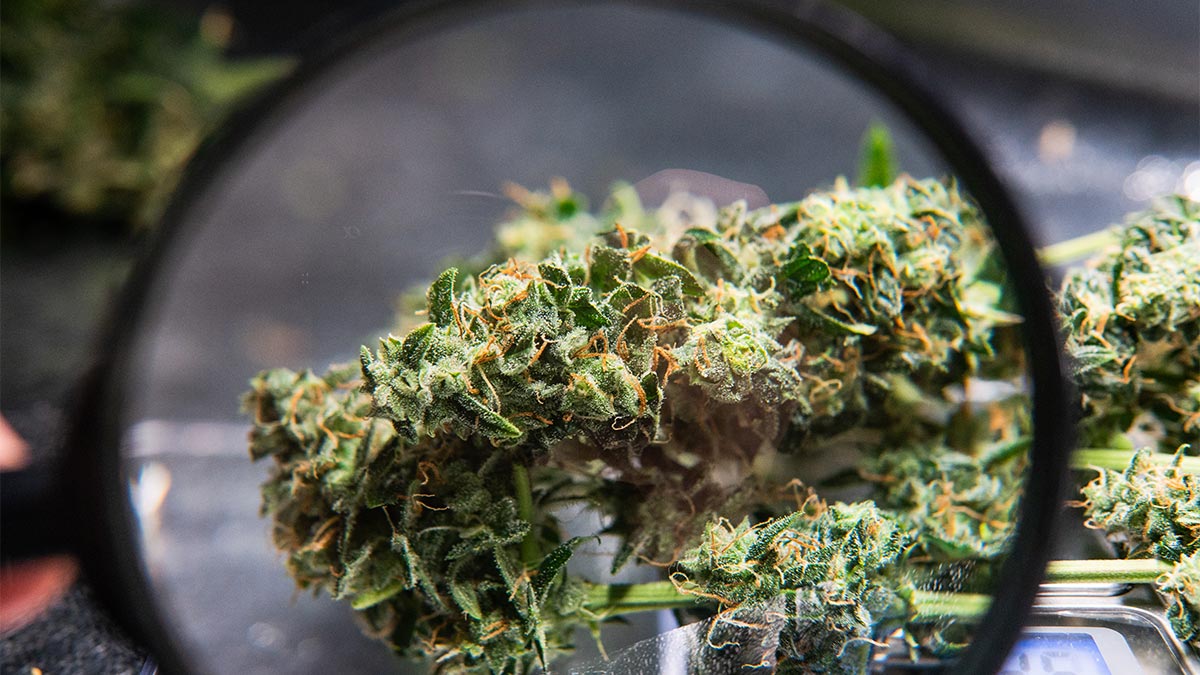How To Tell What Strain Of Weed You Have?
So you think you’re an expert?
Maybe you know how to roll the perfect joint and use a gravity bong. Perhaps you know how to decarb buds and make edibles. You might even know how to dab.
But how about this one: can you look at some flower – or pack a bowl and light up – and immediately know what strain you have? Didn’t think so.
Believe it or not, some true weed connoisseurs are able to do just that, without the benefit of a knowledgeable dealer or a dispensary label on the package.
That’s the sign of a true cannabis expert. And if that knowledge makes you feel a little inadequate, never fear. We have the information you’ll need to identify the mystery strain you’ve fallen in love with. It’s also a great way to just show off to your friends.

Types Of Weed Strains
You probably already know the big two, sativa and indica. What casual smokers might not realize is that there are very few pure sativas and indicas left on the market.
Almost all of today’s strains are hybrids, meaning they’ve been cross-bred to have both indica and sativa characteristics. Growers do that to create cannabis with very specific tastes, aromas, and effects for the end-user.
A few cross-bred strains are 50/50 sativa/indica. The majority, however, “lean” either sativa or indica. That means they have more of one genetic type than the other. For example, the well-known OG Kush strain is 75% indica and 25% sativa; the equally familiar White Widow is 60/40 sativa/indica.
Why does that matter? It’s simple.
Sativa and indica strains generally provide different, but easily identifiable, psychoactive effects. So if you’re trying to tell what strain of weed you have, the type of high you experience can provide many of the clues you need. It’s not a guarantee, by any means. But it’s a good start.
- Sativa strains are likely to deliver an energizing and cerebral head high. They relieve anxiety and may make the user feel more creative and productive.
- Indica strains more often have their greatest effect on the body rather than the head, providing complete relaxation and often causing drowsiness. Indicas are sometimes said to be short for “in da couch” – since the couch is where users might find themselves locked for hours.
What about “how high” they get you? That’s not necessarily an indication of the strain. It’s determined by the amount of THC in the weed, the type of terpenes it contains, and whether it’s been optimally grown and harvested. Many indicas, sativas, and hybrids can all get you wasted; genetics will usually determine the type of high, not how high.
And we’ve emphasized, most strains are hybrids. They’re likely to combine at least some of the telltale effects of both indicas and sativas. That means you have to look for clues other than just the type of high you feel. Many of those clues can be found as soon as you take the buds out of the baggie.
What The Weed Looks Like

The appearance of your flower probably won’t let you identify its specific strain, but it will help you narrow down the field significantly.
Size And Shape
Indicas or indica-dominant hybrids will usually have short, dense, tightly-packed buds that are loaded with sticky trichomes, making them feel heavy in the hand.
Sativas or sativa-dominant hybrids are more likely to have long and narrow buds that are lighter and less dense; they may even seem fluffy when you feel them. Their color is often much lighter than indicas, too. Speaking of which…
Color
Not all weed is as green as you might expect. Some strains have different and easily identifiable colors that can help you narrow down the type of cannabis you’re looking at.
- Purple buds are quite common. Their color can tell you that you’re about to enjoy a strain like Purple Kush, Granddaddy Purple, Purple Urkle, Purple Haze, Purple Gorilla or Grape Ape.
- Orange or yellow weed is probably one of the “citrus” or “candy” strains like Lemon Kush, Orange Velvet, Grapefruit, Orange Crush, Strawberry Banana, Nectarine Lips or Kandy Skunk.
- Red or pink flower is relatively rare, but it can identify strains like Pink Flower Shaman, Pink Kush or Predator Pink.
- Blue weed signifies that the strain is a descendent of the venerable Dutch indica strain Blueberry, with Blue Haze, Blue Cheese and Blue Mystic among the ones you might find.
- Black buds (they’re actually a very, very deep purple) aren’t seen often, but they trace their heritage to Vietnamese strains. Black Tuna and Black Willy are possibilities that are sometimes found in America.
Use some of the other clues we’ll discuss next, and you might be able to come even closer to naming the exact strain.
Aroma And Taste
These hints should help a lot, since different strains present with readily-identifiable flavors and smells. Think about a wine taster who uses flavors and aromas to identify a varietal, instead of simply drinking to get drunk. In the same way, you can concentrate on the entire sensory experience, instead of just trying to get high. That experience will provide crucial information which can help you figure out what strain of weed you have.
- Skunk: The stereotypical dank aroma isn’t necessarily predominant in all strains. When it’s almost overwhelming, though, you probably have a strain that probably traces back to the legendary Skunk #1. Super Skunk, Lemon Skunk and Critical Skunk are among the possibilities, as are strains that combine skunk with a “cheese” aroma like Blue Cheese or Blueberry Cheesecake.
- Diesel: Here’s another stereotypical weed smell, which can help you identify strains like Chemdawg, GG4, Sour Diesel and Bruce Banner.
- Earthy: You should immediately suspect that you have a Kush strain if it smells like earth or pine. (To be honest, most strains have somewhat of an earthy taste, so the aroma is a much better clue.) The flower could be OG Kush, Bubba Kush, Afghan Kush, Purple Kush or one of the many similar West Coast strains.
- Sour: Sour notes in the weed’s aroma or taste should make you suspect that you have a strain like Sour OG, Sour Diesel or Sour Kush – and you should be noticing something important by now. Sour Diesel or Sour Kush will also have diesel or earthy notes, respectively, so being able to pick out each of the smells or tastes in the weed will let you come even closer to narrowing down the actual strain.
- Citrus or Berry: Often called “dessert strains,” the types of weed that smell and taste like citrus fruits or berries have become extremely popular in recent years. Identifying the fruit in the aroma or taste will help you figure out that you’re enjoying strains like Lemon Kush, Super Lemon Haze, Strawberry Banana, Blackberry or Sherbet.
The One Final Ingredient
When you’re trying to tell what strain of weed you have, all of those considerations will help you narrow down the possibilities.
There’s one more ingredient in the recipe, though: experience. The more strains you sample – with your Sherlock Holmes hat on, of course – the more familiar you’ll become with the many varieties of cannabis on the market.
Once you’ve built a mental catalog of the different types of flower that you’ve tried, you can start with the clues and wind up with a conclusion – something like “it’s a purple indica, with a smell that’s a combination of grape and spice, and a trippy head high that morphs into a powerful, relaxing and long-lasting body high…I bet it’s Granddaddy Purple!”
And all of the experimentation it requires to get to that point? It’s an awful lot of fun.
How To Tell What Strain Of Weed You Have FAQ
Q: If most strains are now hybrids, does the type of high you experience really do much to tell you what strain you’ve just smoked?
A: In most cases, it will at least help. Strains that heavily lean one way or the other (sativa or indica) will usually exhibit at least some of the characteristics of their dominant genetics. That information, of course, still has to be combined with all of the other potential identifiers, like size, color, aroma, and smell, before you can make an educated guess about the strain.
Q: What about 50-50 hybrids? Do they have any characteristics that let you figure out the type of weed you have?
A: They can certainly make the detective work more difficult. Honestly, though, the “common wisdom” about sativas and indicas doesn’t always hold true for a specific strain. All of the other clues we’ve discussed – combined with a healthy dose of experience – will be the best indicators. “Sativa is cerebral, indica is body lock” is really just a good starting point for those who are learning how to identify their weed.
Q: Does it really matter whether you know what strain of weed you have?
A: Not if you just want to enjoy the experience. But if you want to be able to find it again and can’t figure out what you’re smoking, good luck – unless it’s from a dispensary and the package is clearly marked.